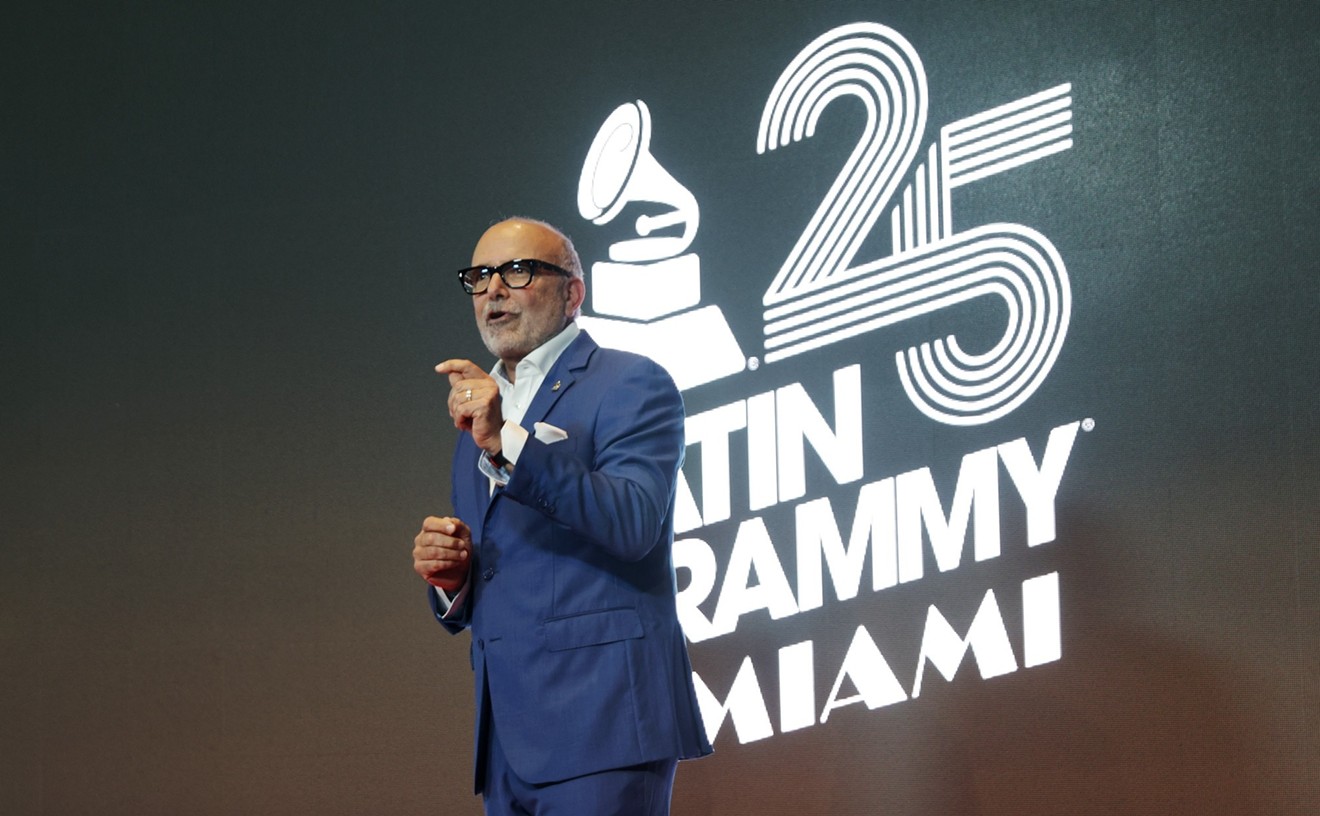Still, they are pretty much a jazz band in attack and approach, which lends them respectability and got them a gig backing jazz legend John Scofield on his album A Go Go. But MMW's rambunctiousness and their virtuosity as musicians put them way out in front of the Beasties as instrumentalists, and their freewheeling grooves place them outside of contemporary jazz's relatively staid company. Partial to the freeform instrumental funk that Jimmy Smith, Grant Green, and the Meters have doled out over the years, this trio of organ, bass, and drums is a groove machine that offers braininess plus the inspiration for some heavy-duty booty-shaking.
And with the addition of DJ Logic spinning records on a handful of tracks and a spoken-word piece laid on top of one instrumental jam, MMW's latest album, Combustication, displays their ability to expand their sound. Though the record debuted at No. 1 on the Billboard jazz charts after its August 11 release, the band refuses to be pigeonholed and is unwilling to play by jazz rules.
Since the beginning the group's members -- bassist Chris Wood, keyboardist John Medeski, and drummer Billy Martin -- have stepped outside of the boundaries of jazz while following the example set by indie-rock bands. MMW released their first record, Notes From the Underground, in 1991, then climbed into a van (later upgraded to an RV) and drove from club to club, impressing freethinking rock audiences who considered the band something of an underground phenomenon. This strategy stemmed from the band's dislike of the traditional jazz scene.
"It was pretty natural," Wood says. "Jazz clubs are overpriced, and they expect a certain type of thing. They have drink minimums, and you can't have an all-ages show at most jazz clubs. It's a little uptight for us. We love jazz, and we're influenced by it, but the clubs that represent that music represent a certain type of jazz; they are more traditional-orientated.
"We went out, and, although we're playing instrumental music, which -- whether it is accurate or not -- gets put in the jazz section [at record stores], we played at rock clubs. There is more openness in those clubs than in jazz clubs. There's not so much of an expectation of what's going to happen. You're freer to create the night as you want."
Getting gigs at coffeehouses and small rock venues, MMW appealed to more adventurous club bookers who realized the band was doing something arty but not too intellectual. The group's next three albums -- Friday Afternoon in the Universe (1994), It's a Jungle in Here (1995), and Shack-man (1996) -- were released on the Grammavision label. All three are funk-inspired, and Shack-man in particular displays world beat influences as well.
During the early '90s, when grunge was king and alternative rock bands were heading for big clubs and arenas, the smaller venues were emptying. Filling the void for those still into non-mainstream music were bands like Minnesota's Low, Britain's pseudo-Krautrockers Stereolab, and dub aficionados Tortoise. MMW have more in common with these bands than they do, say, with fellow postbopper saxophonist Joshua Redman, who's followed a more traditional path. MMW combine the avant-garde weirdness of John Zorn with the accessibility of white funk. In fact part of their appeal is that, unlike most jazz groups, MMW are three white guys. While they certainly don't owe their success to the color of their skins, a funky, white trio is something, for better or worse, that even the H.O.R.D.E. crowd can digest.
Conventional or not, jazz demands that its players know the basics while being able to improvise. After eight years together, the group is an especially tight unit whose members play off of each other without a hitch. But Wood insists the band was that way from from the start. "When we first played together," he says, "we knew that we had a great chemistry, and it felt like we should always be playing music together."
Not surprisingly, each member of the trio received a formal music education. But their interest in experimentation and disdain for "serious" music are what brought them together. The Kentucky-born, Fort Lauderdale-raised Medeski decided in 1984, after one year as a classical-music major at the New England Conservatory of Music in Boston, that the sober-minded instruction wasn't for him. So he switched to the jazz program, which requires just as high a degree of proficiency but allows players to exert more creativity. He gigged around Boston for a while, then moved to New York City in 1990 where he was drawn immediately to the "downtown" jazz scene. He later toured with John Zorn and the Lounge Lizards, among others.
Martin started out in New York, studying at Juilliard and the Manhattan School of Music in the early '80s. Experimentation led him also to New York's eccentric jazz scene, where he performed with Bob Moses, Bill Frisell, and Jaco Pastorius. In 1987 he joined up with Chuck Mangione and two years later returned to New York. The youngster of the group, Wood also attended the New England Conservatory for just a year, then decided to become a part-time student and perform in Boston as a jazz sideman. That's where he met up with Medeski, and they joined Moses for a tour of Israel in 1990. Moses introduced Medeski and Wood to Martin, and MMW was born.
Eight years later, a song like "Hey-Hee-Hi-Ho" on the new album, Combustication, demonstrates what makes the band's music sound both intuitive and unexpected. The song opens with Martin's stuttering drum-kit workout, which is joined by a hiccupping low-end bass run by Wood. Medeski then adds a humming Hammond organ and a few scribbles of clavinet. The main melody, a wavering high-end staccato riff on the organ, doesn't arrive until halfway through the piece. What you hear is three guys jamming, for sure, but they know exactly where the piece is headed.
The jump to Blue Note afforded the band a bigger budget and hence more time in the studio. "A lot of the tunes were written in the studio or just improvised while we were rolling tape, and that was the finished product, more or less," Wood says.
Other highlights on the album come courtesy of an instrument rarely employed by jazz trios, a DJ's turntable. After sharing a bill with ex-Living Colour guitarist Vernon Reid's new combo, a band with which DJ Logic was performing, MMW invited Logic to sit in with them at a weekly gig at the legendary avant-garde club the Knitting Factory. MMW had been playing the shows "just to improvise," Wood explains, "not to play any of our tunes like we usually do when we tour, but to just get up in an intimate setting and improvise together." To alter their sound and hone their chops a bit, they would invite other musicians to join them, and the most successful collaboration had been with DJ Logic.
DJ performs on three tracks on Combustication. "Start Stop," a slow, head-bobber of a song, demonstrates how the fusion works. Logic sets up a drone in the background, and when Medeski joins in, the two intertwine, making it hard to tell what is sampled and what is played on the organ. Just as Martin brings the song to full tilt, the band stops, Logic keeps a xylophone sample going, and after a five-second pause, the trio comes back in. This cycle is repeated several times until, five minutes into the song, Logic steps up his scratching, looping a vocal part around Wood's bass, creating a creepy effect as the song fades away. DJ Logic doesn't overshadow the band; he's just filling in gaps that a limited number of instruments tends to leave.
"We didn't really give him any direction. He just does what he does, another improviser," Wood says. "We do that same thing live: We don't discuss anything; he just comes and adds his flavor."
Medeski, Martin, and Wood will perform with DJ Logic at Pine Crest School Auditorium, 1501 NE 62nd St., Fort Lauderdale, at 8 p.m. Friday, December 4. Tickets cost $20. For information call 954-492-4105 or 954-492-4128.










